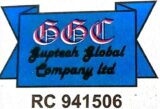Pressure Gauges
Industrial Gauges
A pressure gauge is an analogue device for measuring pressure of liquids and gases. It does this with the use of a curved Bourdon tube, that straightens under pressure. This is linked to a pointer which displays on a graduated dial face and turns clockwise as the pressure rises. Pressure gauges can be measured in many different pressure units such as psi and bar over a 270-degree scale.
GUPTECH supply a range of Pressure Gauges, widely used across many industries and suitable for taking readings in oil, water and gases. Below is a selection of many different types we can offer. Please click through to see the oil, water or gaseous suitability of each gauge. In addition to our range of standard ‘off the shelf’ instruments we can also supply to your required specification including non-standard connections and even customised dials featuring your company logo.
Pressure gauges from WIKA

Our pressure gauges (mechanical pressure measuring instruments) for gauge, absolute and differential pressure have been proven millions of times over. For the optimal solution for the widest range of applications, there is a choice of measuring systems in Bourdon tube, diaphragm element and capsule element technologies. The pressure gauges cover scale ranges from 0 … 0.5 mbar to 0 … 6,000 bar and indication accuracies of up to 0.1 %. For the various requirements in industrial and process instrumentation there are pressure elements from copper alloys, stainless steel or special materials available.
ASHCROFT

Ashcroft manufactures more than 10M variations in there Core Product Lines based on our assesment of your application, your requirements and final offered solution.
Our Products include, Pressure, Temperature and Differential Pressure Gauges, Switches, Pressure Transducers and Transmitters, Prescion Test and Measurement Innstruments, Seals, Isolaters and accessories in ISO 9001/2015 certified facilities. We pride ourselves in our passion to design, manufacture and deliver the most innovative and well-crafted instruments.
Crystal Engineering

Crystal Engineering manufactures digital pressure calibrators, digital pressure gauges, multimeter pressure modules (MultiCals), and other pressure measuring equipment.
Crystal Engineering specializes in pressure calibration and measurement equipment intended for field use, not just controlled laboratory environments. Crystal Engineering’s pressure calibrators and digital pressure gauges have very accurate “of reading” specifications.
What is a pressure gauge?
Pressure gauges are instruments for measuring and displaying the pressure of a medium. Pressure gauges are pressure measuring instruments with elastic pressure elements, which have been used millions of times in various industrial applications. Depending on the area of application of the pressure gauge, Bourdon tubes, diaphragm elements or capsule elements are used as pressure elements.
Which pressures do pressure gauges measure?
Pressure gauges measure gauge pressure, absolute pressure and differential pressure. Furthermore, not only can WIKA pressure gauges be used for measuring positive gauge pressure, but also for measuring negative gauge pressure.
How does a pressure gauge work?
Pressure gauges work differently depending on the type. In industrial measurement technology, two different types of pressure gauges are used – Bourdon tube pressure gauges and diaphragm pressure gauges. They have different functional principles and are therefore suitable for different applications. With Bourdon tube pressure gauges, the pressure is measured by a Bourdon tube transmitting pressure directly to the pointer. Inside the case there is a curved tube, into which the medium enters and causes the Bourdon tube to stretch. This stretching is transmitted to the movement via a link and a toothed segment and displayed on the dial as a corresponding deflection.
Bourdon tube pressure gauges can be used in a variety of ways and cover the majority of applications. However, when they reach their limits, diaphragm pressure gauges are used. In diaphragm pressure gauges, the pressure is transmitted via a wave-shaped diaphragm to a link. This then transfers the pressure to the movement.
What material should my pressure gauge be made of?
Guptech through our OEM offers all common case forms. For standard applications, a plastic version with a copper-alloyed measuring system is sufficient for neutral media, such as compressed air, water or oil. For hydraulic applications, we recommend a robust chrome case with a glycerine filling that damps the measuring system against vibration and thus ensures good readability of the instrument. For measuring tasks in aggressive, not highly viscous and non-crystallising substances, even in aggressive environments, the pressure gauge variants made from stainless steel are suitable. The measuring system can also be coated with a special material such as PTFE, gold, Hastelloy and many others. This protects the instrument from aggressive media.
What is meant by the accuracy class of a pressure gauge?
On the dial of a pressure gauge we always find an indication of the accuracy class. The accuracy class of a pressure gauge defines the permissible deviation of the display in percent of the full scale value. For plastic cases, this is 4 % or 2.5 %, whereas for chrome steel or stainless steel instruments it is 1.6 % or 1.0 %. For test gauges, the accuracy class is 0.6 %, 0.25 % or even 0.1 %, depending on the display range used. What does this mean in practice? With a measuring range of 0 to 100 bar and an accuracy class of 1.0 %, the permissible deviation is 1 bar over the entire measuring range.
What is calibration?
Calibration is the process of testing and then correcting the accuracy of measuring equipment.
Measuring equipment will lose accuracy over time and calibration is vital to ensure the reliability of recordings. For any industry relying on the precision of measurements, for example, pressure and temperature readings, a trusted calibration service is essential.
How often should my gauge be calibrated?
Pressure gauge re-calibration is determined by the end user. Generally, the more critical the industry the more often the gauge will be calibrated. It would usually be written into the site procedure or manual. After our years of experience annually is certainly most common we come across.
